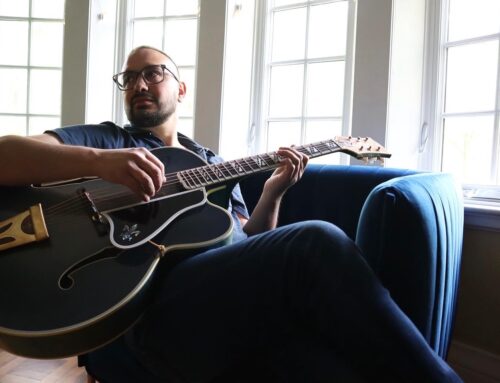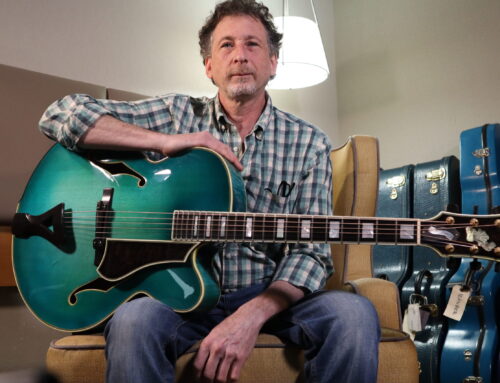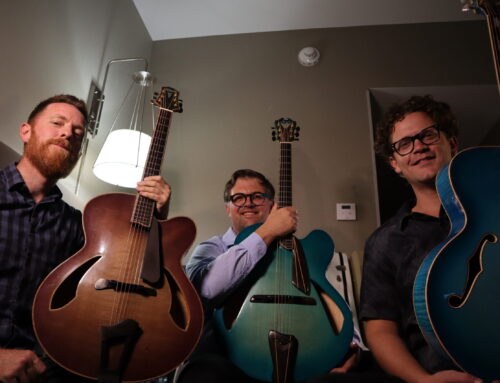Hello, all. If you’re here, it’s a pretty good bet you’re a guitar fan, and not an average one at that, as the Blue Guitars are hardly normal guitars. The Archtop Foundation acquired the Chinery Blue Guitar Collection with the express purpose to use them to raise awareness of the beauty, flexibility, and downright awesomeness of hand-built archtop guitars. As we see it, that’s a sacred duty, and we don’t take it lightly.
So this is an appeal to you to reach out to us with your ideas on how to get these guitars back into the hands of artists and back in the consciousness of the public. Here’s what’s on the table for now:
- Restoring the guitars to perfect playability. For the most part, these guitars haven’t really been played in 20 years, and there is some routine maintenance to get done.
- Building this website to give everyone access to what will essentially be a virtual museum. On the website there will be a) a section dedicated to each guitar, including features, and if possible, filmed interviews with the luthiers; b) recordings of each guitar being played in a variety of styles; c) “guided tours” of the guitars, with links to our YouTube channel featuring brief descriptions by Paul Asbell, or to that of Jazz Guitar Today, which will be featuring Ted Ludwig in a longer format on each guitar; d) still photographs and specifications of each of the guitar; e) a “blind taste test”, allowing you to compare the sound of the guitars blind and free of any bias, over a variety of styles. Will the guitars you prefer for jazz also be your favorites for bluegrass? Let’s find out! and e) expert commentary such as “Why are most of the guitars green today” by luthier and finishing expert Jeff Jewitt.
- Touring the guitars–we plan on going to several guitar shows every year–see our events page for the schedule.
- Participating in Worcester Polytechnic Institute’s “Fretology” study, using all the best modern technology, from CT-scans to robotic plucking machines for consistent measurement to cutting edge acoustic facilities to determine more about what makes some guitars sound better. This data will be made available to luthiers and luthier schools to further advance the art of the archtop.
- “Guitars in Residence” programs, bringing some of the guitars for longer periods of times to music schools, museums, and educational facilities.
Got any ideas or suggestions? Please let us know. This is all so new that we don’t have our email server set up yet, but you can respond to the Contact page with your information and we’ll be happy to get back in touch with you.
From the folks at the Archtop Foundation




